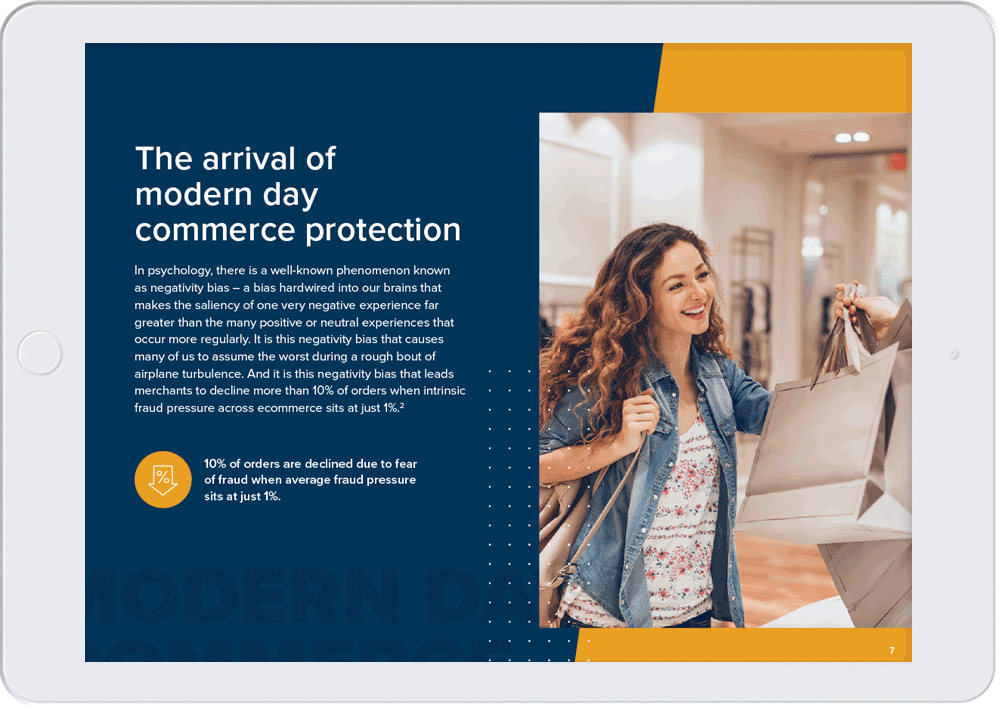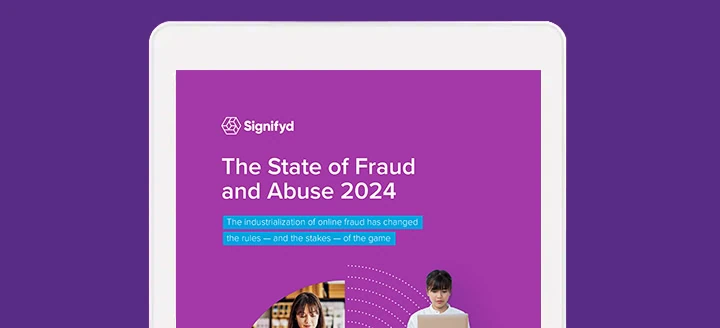E-BOOK
Commerce Protection Buyer’s Guide
A comprehensive resource for ecommerce merchants evaluating commerce protection solutions this year

Here is what you will find inside
A brief history of commerce protection
The history of fraud protection, including static fraud filters, manual review and scoring solutions.
The arrival of modern day commerce protection
The anatomy of leading commerce protection solutions and use cases.
How to evaluate commerce protection tools
How to determine a vendor’s ROI, build the internal case for change and a back pocket guide for writing the RFI shared with candidate vendors.
Commerce protection is the new frontier of payment security and fraud prevention. It takes what the previous generation of fraud prevention brought to market and builds upon it to establish a comprehensive solution that protects both merchants and their customers across the entire shopper's journey. Most importantly, commerce protection removes the fear of fraud from the order decisioning equation and allows merchants to optimize for revenue attainment rather than risk elimination.
Commerce protection has evolved in recent years and reframes the problem to solve what represents the biggest loss for merchants – sales falsely declined due to fear of fraud.
Get the e-book to learn about:
- How liability shift and fraud protection guarantees function
- The importance of your vendor’s network
- How to evaluate machine learning capabilities
- Device fingerprinting
- Tracking and analysis
- Data enrichment
- Shopper identification rates
- Order automation
- Conversion optimization
- Omnichannel commerce
- Cross-border expansion
- Anatomy of a commerce protection solution
- The backbone of commerce protection is a liability shift that eliminates fraud losses for merchants by backing every approved order with a 100% financial guarantee against fraud. If an approved order turns out to be fraudulent, the merchant is reimbursed in full for the cost of the chargeback.
- Commerce protection use cases
- Fear of fraud manifests as a variety of business challenges including manual order reviews, revenue leakage, poor customer experience and customer drop-off. The four most common use cases of commerce protection – order automation, conversion optimization, cross-border expansion and omnichannel commerce – demonstrate how a comprehensive commerce protection solution protects the shoppers journey, solving each of these challenges.
- How to evaluate commerce protection tools
- A successful and streamlined evaluation process starts with your own independent research leveraging a diverse slate of resources, followed by a well-structured RFI questionnaire and solution scoring process, ROI calculations and comparisons, and finally, once a top contender is identified, a bullet-proof business case to win buy-in internally.
- RFI for commerce protection
- Not sure where to get started with your RFI? We have put together an exhaustive list of RFI considerations and questions when evaluating commerce protection vendors that you can leverage within your own evaluation process.
- Evaluating ROI
- When evaluating for ROI, consider the monetary, productivity and customer lifetime returns each solution can provide.
- Building a business case for commerce protection
- A bulletproof business case should distill all the research that you have done to point you towards your chosen provider and clearly articulate the challenge, solution and value that the partnership will bring.
- Your back pocket guide to RFIs
- There’s a lot to consider when evaluating commerce protection providers. Finding the right solution for your business requires asking the right questions – but to ask the right questions you must first know what to look for. Download the full Commerce Protection Guide below for more of the answers (and questions) you need to make your RFI process a success.








